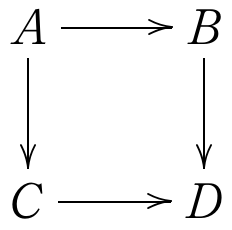「ある恒等式と部分分数分解」で得られた等式の応用
引き続き、$K$を任意の体とします。$V$と$V'$の定義を再掲しておきます。
$$ V(a_1,\ldots, a_n)= \begin{vmatrix}
1 & a_1 & \cdots & a_1^{n-1} \\
1 & a_2 & \cdots & a_2^{n-1} \\
&& \vdots & \\
1 & a_n & \cdots & a_n^{n-1} \end{vmatrix} =\prod_{i< j}(a_j-a_i)$$
$$ V'(a_1,\ldots,a_n;b_1,\ldots,b_n) = \begin{vmatrix}
1 & a_1 & \cdots & a_1^{n-2} & b_1 \\
1 & a_2 & \cdots & a_2^{n-2} & b_2 \\
&& \vdots && \\
1 & a_n & \cdots & a_n^{n-2} & b_n \end{vmatrix}$$
また、この記事では$n$は$1$以上の整数とします。$n=1$のとき、
$$ V(a_1)=1, \qquad V'(a_1;b_1) = b_1$$
と約束します。
前回の記事では、
$a_1,\ldots,a_n\in K$を相異なる元とする。このとき、任意の$b_1, \ldots, b_n\in K$に対し
$$ \sum_{i=1}^n\frac {b_i}{\prod_{j\neq i}(a_i-a_j)}=\frac {V'(a_1,\ldots, a_n;b_1,\ldots, b_n)}{V(a_1,\ldots, a_n)}$$
という式を示しました。前回は$n\geqq 2$としていましたが、$n=1$の場合も$\prod_{j\neq i}(a_i-a_j)=1$と約束すれば成り立つことが確かめられます。
前回はこの等式において$b_1=\cdots=b_n=1$とおくことにより目的の式を得ましたが、他の値を代入して得られる式をいくつか見ていきたいと思います。
$b_i=a_i^m \quad (m=1,\ldots,n-2)$
$m$を$1$以上$n-2$以下の整数とし、$b_i=a_i^{m}$の場合を考えます。この場合も、$V'$の定義に現れる行列式が$0$になることが容易に分かり、従って、前回の結果と合わせて
$a_1,\ldots,a_n\in K$を相異なる元とし、$m$を$0$以上$n-2$以下の整数とする。このとき
$$ \sum_{i=1}^n\frac {a_i^m}{\prod_{j\neq i}(a_i-a_j)}=0$$
が成り立ちます。さらに、$\sum$の線形性から
$a_1,\ldots,a_n\in K$を相異なる元とし、$P(x)$を高々$n-2$次の$K$係数多項式とする。このとき
$$ \sum_{i=1}^n\frac {P(a_i)}{\prod_{j\neq i}(a_i-a_j)}=0$$
も成り立ちます。これにより、前回よりも一般的な状況での部分分数分解に対応できます。例えば$n=4$として
$$\frac {x^2-2}{(x-3)(x-5)(x-6)}+\frac {3^2-2}{(3-x)(3-5)(3-6)}+\frac {5^2-2}{(5-x)(5-3)(5-6)}+\frac {6^2-2}{(6-x)(6-3)(6-5)}=0$$
など。
$b_i=a_i^{n-1}$
$b_i=a_i^{n-1}$の場合を考えます。この場合は、$V'$の定義から
$$ V'(a_1,\ldots,a_n;a_1^{n-1},\ldots,a_n^{n-1})=V(a_1,\ldots, a_n)$$
であることが分かり、したがって
$a_1,\ldots,a_n\in K$を相異なる元とする。このとき
$$ \sum_{i=1}^n\frac {a_i^{n-1}}{\prod_{j\neq i}(a_i-a_j)}=1$$
が成り立ちます。
$a_0,\ldots,a_n$が公差$1$の等差数列
この節では、結果の見栄えのため、添え字を$0,\ldots, n$とします。すなわち、$n$は$0$以上の整数で、等式
$$ \sum_{i=0}^n\frac {b_i}{\prod_{j\neq i}(a_i-a_j)}=\frac {V'(a_0,\ldots, a_n;b_0,\ldots, b_n)}{V(a_0,\ldots, a_n)}$$
を利用します。また、体$K$の標数は$0$であるか十分大きいとします。
任意に$a \in K$をとり、$a_0,\ldots,a_n$に$a,a+1,\ldots,a+n$を代入します。各$i$に対して$\prod_{j\neq i}(a_i-a_j)$を計算すると、
$$ \prod_{j\neq i}(a_i-a_j)=\prod_{j\neq i}(i-j)=(-1)^{n-i}i!(n-i)!$$
となるので、
$$ \sum_{i=0}^n\frac {(-1)^{n-i}b_i}{i!(n-i)!}=\frac {V'(a,\ldots, a+n;b_0,\ldots, b_n)}{V(a,\ldots, a+n)}$$
が成り立ち、さらに両辺に$n!$をかければ
$$ \sum_{i=0}^n (-1)^{n-i}b_i \cdot {}_n\mathrm{C}_i=n! \cdot \frac {V'(a,\ldots, a+n;b_0,\ldots, b_n)}{V(a,\ldots, a+n)}$$
となります。
ここで、先ほどと同じように$b_i=(a+i)^m \quad (m=0,\ldots,n)$を代入すると、
$$ \sum_{i=0}^n (-1)^{n-i} (a+i)^m \cdot {}_n\mathrm{C}_i=\left\{ \begin{eqnarray} &0& \quad (m=0,1,\ldots n-1) \\ &n!& \quad (m=n) \end{eqnarray} \right.$$
が得られます。
二項係数の重み付き交代和の公式が得られました。まとめると、
$n$を自然数とする。$a \in K$を任意の元とし、$a,a+1,\ldots,a+n$が相異なると仮定する。このとき
$$ \sum_{i=0}^n (-1)^{n-i} (a+i)^m \cdot {}_n\mathrm{C}_i=\left\{ \begin{eqnarray} &0& \quad (m=0,1,\ldots n-1) \\ &n!& \quad (m=n) \end{eqnarray} \right.$$
例えば、以下のような式が成り立つことが分かります。
$$ -16 + 3 \cdot 17 - 3 \cdot 18 + 19 = 0$$
$$ -16^2 + 3 \cdot 17^2 - 3 \cdot 18^2 + 19^2 = 0$$
$$ -16^3 + 3 \cdot 17^3 - 3 \cdot 18^3 + 19^3 = 6$$
